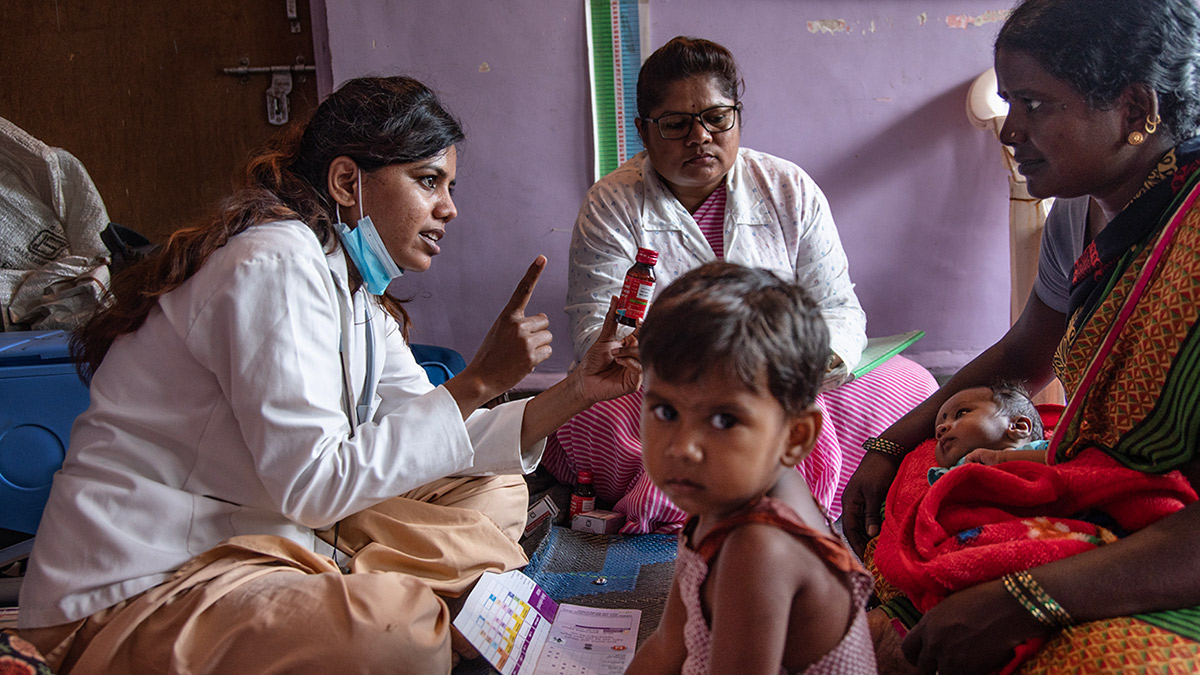Key points
As one of the most cost-effective ways to improve health, immunization is a best buy for public health. By extension, immunization strengthens national, regional, and global health security.
Immunization saves lives

Vaccines prevent an estimated 4 million deaths a year.1
Despite the existence of safe and effective vaccines, vaccine-preventable diseases (VPDs) remain a leading childhood killer and global health threat. Why? Because about 1 in 5 children in the world do not have access to these lifesaving immunizations.
Vaccines improve lifelong health
While most vaccines go to young children through essential immunization services, vaccines against diseases such as human papillomavirus virus (HPV) and meningitis provide important protection to adolescents. Adult populations – such as high-risk groups like health workers and members of displaced communities – also benefit from immunizations. For outbreak-prone diseases like typhoid, cholera, Ebola, and yellow fever, vaccines protect community members of all ages.
Other ways immunization saves lives
By preventing the spread of VPDs, immunization programs save lives and prevent disease and disabilities. They also help:
- Prevent outbreaks, reducing loss of life, health, safety, and livelihood
- Strengthen global health security (as immunizations help decrease antibiotic resistance and economic instability)
- Sustainably prevent, detect, and respond to VPDs, as well as other emerging disease threats
Immunization saves money
Each dollar spent on vaccination saves $52.2
Immunization is among the most cost-effective ways to support a healthier and safer world.
VPDs create costs for families, communities, businesses, and health systems. Immunizing and preventing disease reduces the risk of financial hardships and economic instability by avoiding:
- Lost work and school days
- Cost of medical care
- Diversion of resources to outbreak response
- Outbreak-related disruptions to local and global economies, travel, and trade
Immunization makes the world healthier and safer
People move around, and so do diseases.
Immunization makes our world healthier and safer by:
- Improving children's life expectancy and promoting a healthy start in life
- Providing protection from preventable diseases throughout the lifespan
- Protecting populations who are at risk due to occupation, displacement, or migration
- Supporting a healthy and productive workforce in local and global economies
- Advancing the safety and security for Americans where they live, work, and play
Immunization is a foundation for primary care
Vaccines connect people to health providers.
Visiting healthcare providers for vaccinations provides an opportunity to address overall health.
Healthcare workers can provide other health services that individuals or their family members may need beyond vaccines. This prevents or reduces individual and community health risks.

- Modeling the impact of vaccination for the immunization agenda 2030: Deaths averted due to vaccination against 14 pathogens in 194 countries from 2021-2030.Carter A, Msemburi W, Sim SY, A.M. Gaythorpe K, Lindstrand A, Hutubessy RCW. SSRN Electronic Journal. April 2021. doi: 10.2139/ssrn.3830781.
- Return on investment from immunization against 10 pathogens in 94 low- and middle-income countries, 2011–30. Sim SY, Watts E, Constenla D, Brenzel L, Patenaude BN. Health Affairs. 2020;39(8):1343-1353. doi: 10.1377/hlthaff.2020.0010
